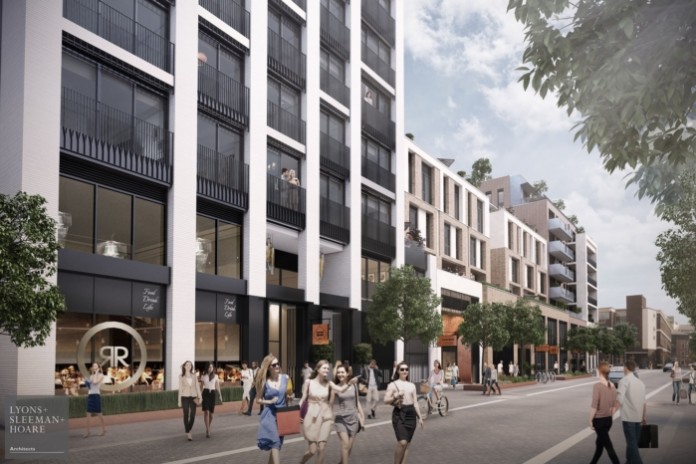Bristol City Council has granted consent for a major regeneration project in the heart of Redcliffe in Bristol. Detailed plans for the second phase of Redcliff Quarter were given the backing by councillors at committee on 30 November 2016.
The development will include what is to become Bristol’s tallest residential building at 22 storeys.
Together with phase one of the development, Redcliff Quarter comprises 3.3 acres of land in the heart of Redcliffe which has lain derelict for around 20 years. Change Real Estate can now move forward with its plans to create a 600,000 sq ft mixed use urban village that will feature the first Radisson Red lifestyle hotel in England, a European style food court to be run by Michelin starred chef and foodie entrepreneur Josh Eggleton, a roof-top restaurant with panoramic views over the city, cafes, 15,000 sq ft of offices and 317 new homes.
Phase one (0.8 acres) received consent in April 2015, comprising a further 128 residential units and three retail units.
Ron Persaud, Director at Change Real Estate, says, “We were able to see the long term potential in this site from day one, to transform a derelict and little used area into a development that will make a positive contribution to Bristol. Situated in the heart of a conservation area we know that we are guardians of a much loved and protected part of the city. We take these responsibilities very seriously and will continue to work closely with the local community throughout the development. We’d like to thank Bristol City Council for their commitment to the scheme, and to the local community for their support.”
Cllr Paul Smith says, “As the local ward Councillor and the cabinet member for homes I am keen to see this development progress. Bristol needs more corporate private rented housing to provide competition to the buy-to-let market and to provide private renters with greater security. I am also pleased that this development is providing affordable housing both on the site itself and in the locality.”
It is estimated that 4-500 jobs will be created and an estimated £7million per annum contributed to the local economy once the development is complete. The Radisson Red hotel will help meet the need for visitor accommodation in the city with 185 beds and attracting around 70,000 guests a year.
Redcliff Quarter will include a 22 storey central tower which is set to become an iconic beacon for inner city regeneration, setting it apart from other developments in the city. The slender, landmark tower includes a Bristol Blue Glass feature at the top level, referencing the post-war light industrial use of the site by the Pilkington Glass Works and the Bristol Blue Glass workshop.
Importantly, the plans include a number of public realm improvements which include a new pedestrian street linking St Thomas Street and Redcliff Street. The existing streetscape will be improved with widened pavements creating a pedestrian-friendly environment, reflecting the changing nature of the local traffic flow over recent years; on-street parking bays will be retained, while car parking for the new development will be situated underground, with ample bike storage for both residents and visitors.
Redcliff Quarter’s architecture will reflect the artisanal character and industrial heritage of this part of Bristol bringing an urban feel to the public realm. Roof top and courtyard gardens, balconies and terraces, as well as internal courtyards, will play a large part in the design to create an attractive and interesting streetscape, maximising light and enhancing the unique character of the area.
The £180 million development is being brought forward as a joint venture between Change Real Estate, Cannon Family Office and ICG Longbow.
Change Real Estate has agreed an 11.7% affordable housing provision within the development, together with a £2m contribution to archaeological works and further off-site housing provision.
Redcliff Quarter has been designed by award winning architects Lyons Sleaman Hoare. GVA has provided planning advice.
Change Real Estate will now commence archaeology, after which construction will begin.



















